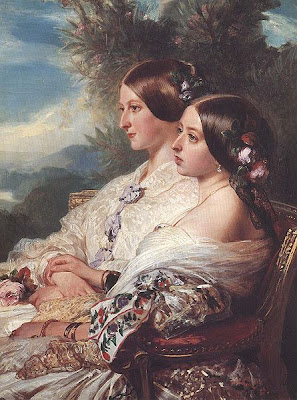This is one of the most revolting accusations I have ever seen. Shame on the Italian and other journalists who have been carelessly repeating the rumor. Few people can have been more viscerally opposed to Mussolini and fascism than the Princess of Piedmont, the daughter of one of the most liberal and democratic royal couples in Europe, Albert and Elisabeth of Belgium. I have never seen any evidence that Marie-José ever found Mussolini personally attractive, at all. It is true that she was naïve about fascism as a young bride, upon first arriving in Italy in 1930. As she candidly admitted to her biographer, Luciano Regolo, she initially had a good impression of Mussolini's political leadership, which was being widely praised throughout Europe. She noted the apparent order, efficiency and prosperity of Italy under the new regime. With her humanitarian concerns, she also appreciated certain social initiatives introduced by the fascists.
From the beginning, however, Marie-José came into conflict with the strident nationalism of the regime, resisting pressure to use the Italian form of her name, Maria Giuseppina. Soon, especially as she formed friendships with dissident intellectuals, such as Zanotti Bianco and Benedetto Croce, it became increasingly clear to the Princess that her beloved adopted country was headed on a downward spiral of tyranny. By 1938, according to documents in British archives, discussed by Luciano Regolo in his 2002 biography of Marie-José, she and her husband were involved in a plot to overthrow Mussolini, which would have prevented Italy from entering World War II at the side of Nazi Germany. King Victor Emmanuel III and his heir, Prince Umberto, were apparently to abdicate, placing Marie-José's infant son on the throne, with Marie-José as regent. The plans, of course, sadly came to nothing, but Marie-José, with Umberto's discreet support, would continue her intrigues against the fascist regime during the war. It is known that she did her best to further a separate peace between Italy and the Allies, through the Vatican, in secret meetings with Monsignor Montini.
In the Italian press, we are now asked to believe that all these dangerous, courageous political activities were merely manifestations of the fury of a woman scorned.
The claim that Mussolini and Marie-José had a brief affair at some point supposedly emerges from a 1971 letter by one of the dictator's sons, Romano. Apparently, he heard the rumor from his mother. I wonder, though, if it actually originated in the perverted, lascivious, and exhibitionist mind of
Il Duce himself. In Luciano Regolo's biography, Marie-José tells of a strange episode from her early days as Princess of Piedmont. On one occasion, Mussolini arrived at the Quirinal for a meeting with the King. An active patroness of the Red Cross, Marie-José took the opportunity to seek Mussolini's assistance in improving conditions in a northern Italian hospital, so poorly endowed that three female patients had to share the same bed, as she innocently explained to him. This remark seems to have stirred lewd fantasies in Mussolini's mind, as he immediately began trying to flirt with the Princess, both during the interview, and during a telephone call later that night.
In her diary, Claretta Petacci, Mussolini's famous mistress, recorded that Mussolini had described to her, in lurid detail, how Marie-José had supposedly attempted to seduce him, during a meeting with the Italian royal family. Needless to say, this is totally implausible. Aside from Marie-José's upright character, how could anyone believe she would behave so before the eyes of her father-in-law, the King, her mother-in-law, the Queen, and her own husband, the heir to the throne, not to mention the
Duce's entourage and representatives of the press? If, however, Mussolini was given to spreading such stories, it might explain the origin of the rumor that he was Marie-José's lover. The Princess was obviously a very beautiful woman and she may well have attracted Mussolini's untoward attention. It is unthinkable, though, that she returned any such interest, and I am heartily glad that both Princess Maria Gabriella and Prince Victor Emmanuel have
vigorously denounced these horrible slurs against their late mother's reputation.
















